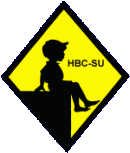
Figure 1.--French school children at private schools where uniforms were worn often wore capes rather than coats. I'm not sure why this was.


Figure 1.--French school children at private schools where uniforms were worn often wore capes rather than coats. I'm not sure why this was. |
Our information on school capes is very limited. Most of the information we have at this time is from France. They were little worn after World war II. We have noted them at private schools and onstitutions like orphanafes. A French reader tells us that they were most common with children from low-income families. The cape was a less expensive garment than a coat.
French school children, both boys and girls, traditionally wore capes in inclement weather. They were worn by both boys and girls. They were mostly worn at private boarding schools where the children wore uniforms. HBC at this time, however, has little information about capes. I'm not quite sure, however, why the boys wore capes rather than coats.
HBC has noted the school cape being worn in only a few countries. We most commonly see it in France during the early 20th century. We do not know when it was first worn. It appears to have been a common garment at institutions like boarding schools and orphanages during the early 20th century. It was worn by children from less affluent families because it was cheaper than a coat. The cape appears to have been worn through the 1940s. We note an Au Bon Marche ad in 1940. We note some boys wearing them in the 1940s. The style disappeared during the 1950s. They may have been used at some ptrivate schools in the 1950s. I am not sure if the time lines for boys and girls was different.
We have very limited information at this time concerning the countries in which school capes were worn. The cape was widely worn by French school children. This includes some French colonies such as Algeria. I do not know of any other countries, except perhaps Belgium, where the children wore capes rather than coats. They may have also been wore in Switzerland, but we can not yet confirm this. Spain and Italy are other possibilities, but again we have no confirmation. We have noted the cape being worn at English choirs, but at Englisgh schools--at least boys schools.
HBC does not know if the cape was associated with certain types of schools. A number of questions present themselves here. Was it only worn at private schools with uniforms or did children going to state schools wear them? We think that they were most noticeable ast Catholic schools, because these were the schools with uniforms. We also note that they were worn at state institutions like orphanages. A French reader tells us that children at state schools also wore them, but not as required unifirm items. They were less expensive than coats and thus often wirn by children from less-affluent families.

Figure 2.--French compabies in the early 20th century began using the school boy in a smock as an image in their advertising. Notice the other symbols of the French school boy: the beret. |
HBC does not know why the cape became popular in France, but was not worn by boys in other countries.
HBC does not know if the cape was uniquely a school garment or whether it was worn for other occasions during cold weather.
School capes were worn by both boys and girls in France. HBC does not know if the design of the capes vaired for boys and girls.
HBC believes that almost all school capes were woolen garments.
HBC has no detailed information on cape design. We believe that they were generally made with collars. There was a button near the collar, but I am not sure how many more buttons there were. Many were lined garments.
While capes are most associated with school wear, they have also been worn as part of choirs costumes. Some British choirboys (usually the senior choristers, but sometimes the entire choir) also wear
capes with their choral robes, donning the capes when proceeding from choir school or practice room to the cathedral proper. The two middle boys in this picture from Lincoln Cathedral are be-caped, and probaly appreciative of the extra warmth afforded by their capes in the chilly winter
snow.
Related Chronolgy Pages in the Boys' Historical Web Site
[The 1840s]
[The 1930s]
[The 1940s]
[The 1930s]
[The 1940s]
[The 1950s]
[The 1960s]
[The 1970s]
[The 1980s]
Related Style Pages in the Boys' Historical Web Site
[Long pants suits]
[Short pants suits]
[Socks]
[Eton suits]
[Jacket and trousers]
[Blazer]
[School sandals]
Navigate the Boys' Historical Clothing Web Page
[Return to Main school uniform page]
[Return to Main school uniform garment page]
[Return to Main cape page]
[Introduction]
[Activities]
[Biographies]
[Chronology]
[Cloth and textiles]
[Clothing styles]
[Countries]
[Topics]
[Bibliographies]
[Contributions]
[FAQs]
[Glossaries]
[Satellite sites]
[Tools]
[Boys' Clothing Home]
